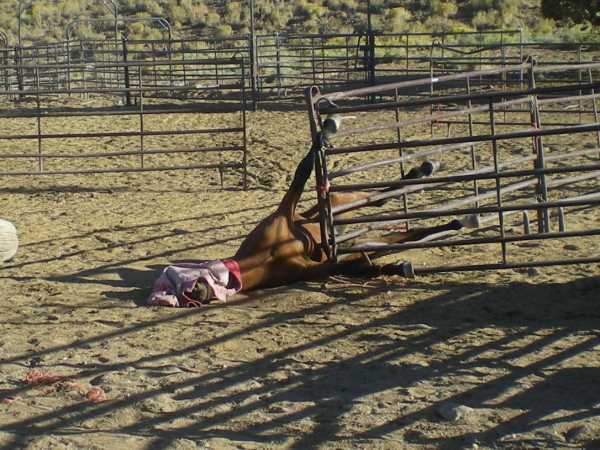LARGE ANIMAL RESCUE SKULL SESSION
|
| HORSE IN A BIND |
|
This problem is based on a real scenario and is presented for a "Skull Session" discussion in the Technical Large Animal Emergency Rescue Facebook Group.
Location The incident has occurred in a remote area of the range at a cattle sorting station. Date and Time Early summer, mid afternoon with the day getting hot. Incident Details You receive a call that a wild (feral) stallion has gotten a leg caught in the panels of a cattle sorting corral in a remote area of the range, and appears to have been there for at least several hours, but there is no telling how long. The location is accessible via horseback or high clearance 4-wheel drive. There is no equipment available on-scene except what is used on-site at the cattle sorting corral. There is no veterinarian available to respond to this location. Your team is limited to four people, two ropes and a beach towel. Upon arrival you find the horse on its side with one leg wedged between two panels. (Please assume that the towel has not been placed over the horse's head prior to arrival. Getting a trapped wild horse quiet with humans approaching trumped getting a raw "before" photograph.)
The scene on your arrival.
|
| ACTUAL RESCUE ACTIVITIES |
In this response we had an employee of the Nevada Department of Agriculture with appropriate feral horse experience, an on-scene helper with general livestock experience, and three response team volunteers. Mike, the Ag employee, retrieved a beach towel, made a visual assessment of the horse, determined that the horse was alive and responsive, and managed to wrap the beach towel around the horse's head to protect his eyes and help keep him calm. We did not have a veterinarian or specialized equipment available to this remote location within the time required.
We next assessed in closer detail how the horse was trapped and how the corral panels were configured and secured. We did not touch or disturb the corral panels as we did not want to disturb the horse and cause him to struggle.
Because of personal activities when the call came in, we weren't in a location to go get our equipment or helmets so while we were still efficient, we were more deliberate and safety conscious. (I now usually carry a spare helmet in my pickup.)
Mike was in charge of this incident. One team member was "Safety Officer" and also took the photos.
The horse's head was controlled. The helper with livestock experience managed the head.
Methodically controlling the head.
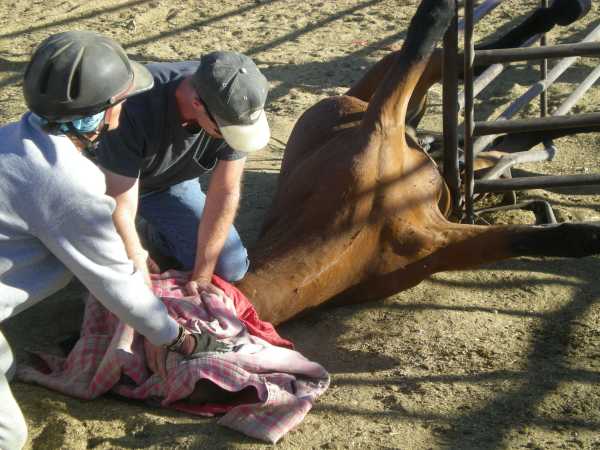
Securing the untrapped front leg.
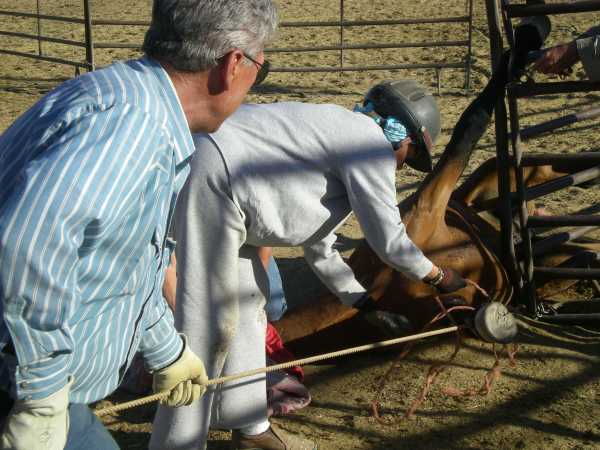
Discussing what would take place next before taking action.
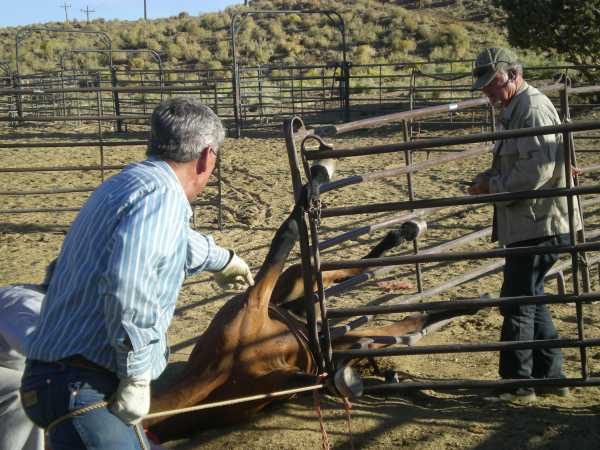
I worked the horse's trapped leg from outside the panels.
From the way the horse was positioned, we had to first lean the panel inward, then slide it free from the horse's hind legs in order not to put additional pressure against the horse's trapped leg. This maneuver was done carefully with one person at each end of the panel being moved so as to minimize a kick response from the horse.
Removing the panel.
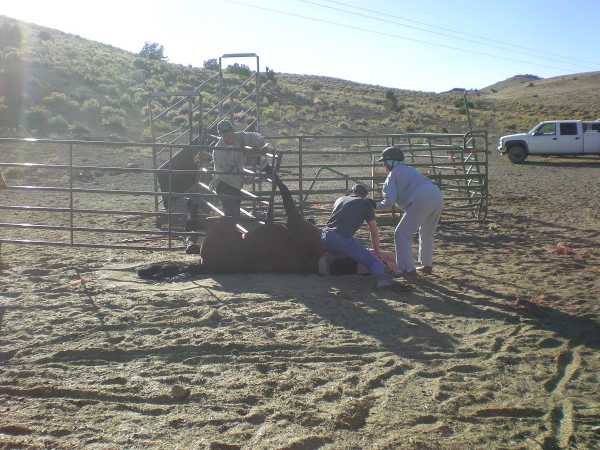
Next the other nearby panels were relocated a safe distance away, the restraints were removed from the horse's front leg and the beach towel was folded back so that the horse could see. Everyone moved a safe distance away.
The horse made several attempts to stand and would fall over each time. Then he rested for a few minutes, stretched his formerly trapped leg a couple of times, and once he could control that leg, he got to his feet, regained his composure, then walked off onto the range.
A bit sore and stiff legged, the horse was able to travel on his own.
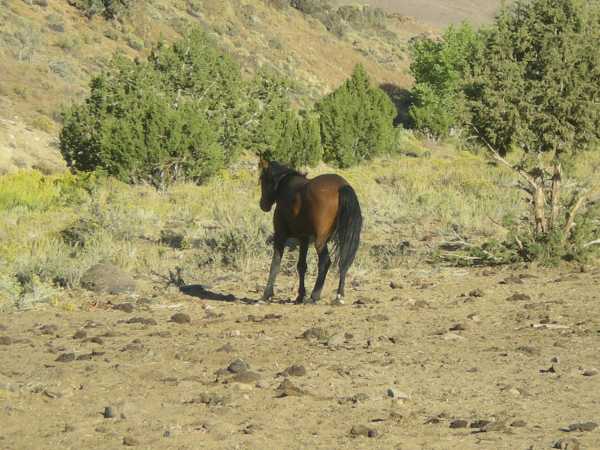
Go to Skull Session Index
Return to the Strike Team LRTC Page
This material is intended for the use of the Technical Large Animal Emergency Rescue (TLAER) Facebook Group. TLAER is a trademark of Technical Large Animal Emergency Rescue. |
